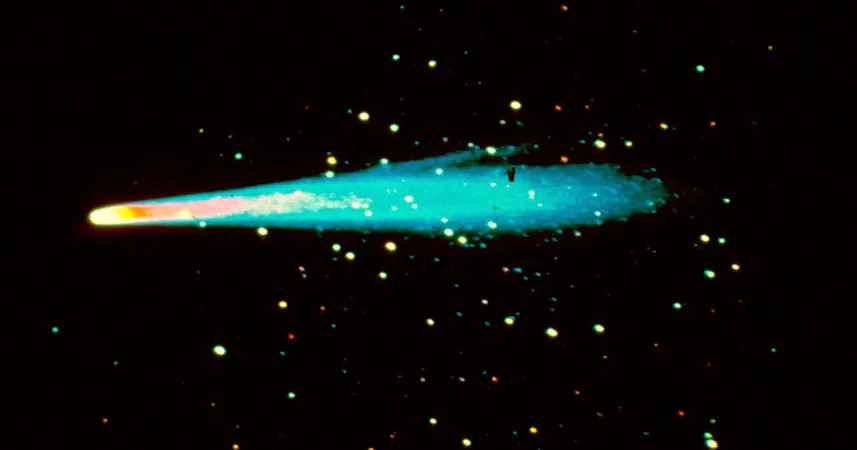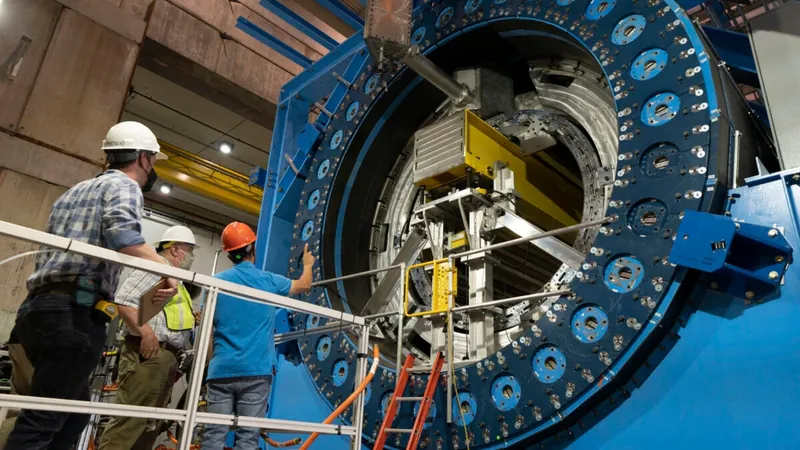
Unraveling the Mystery: Four Telescopes Reveal the Bizarre Nature of the Interstellar Object 3I/ATLAS
2025-09-07
Author: Jia
An Intriguing Encounter from the Unknown
In a rare astronomical event, scientists are frantically studying 3I/ATLAS, the third known interstellar object to breach our solar system. First spotted racing towards the Sun in early July, this enigmatic entity has become a focal point of fascination for researchers eager to unveil its secrets.
A Quartet of Telescopes Join Forces
NASA's leading telescopes—Hubble, SPHEREx, TESS, and the James Webb Space Telescope—have united their powerful lenses to observe this comet-like phenomenon. While experts largely agree that 3I/ATLAS is a comet, a deeper dive into the data reveals astonishing anomalies that challenge conventional understanding.
Unprecedented Carbon Dioxide Levels
Observations from SPHEREx and the James Webb Telescope unveiled a shocking discovery: the comet's coma—the surrounding cloud of gas and dust—contains an unprecedented amount of carbon dioxide. In fact, this icy wanderer boasts the highest carbon dioxide to water ratio ever documented in a comet, raising questions about its origins and composition.
Activity at Distances Unseen Before
Meanwhile, TESS, which had previously detected the object months prior, noted that 3I/ATLAS displayed unusual brightness and activity even when it was six astronomical units away from the Sun, remarkably far beyond the orbit of Jupiter. This level of activity at such a distance is not typical for comets.
A Curious Shape and Baffling Characteristics
NASA's Hubble Telescope captured striking images of the object, revealing a "teardrop-shaped cocoon of dust" emanating from its icy nucleus. However, the comet lacks a defined tail, leading Harvard astronomer Avi Loeb to suggest some outlandish possibilities, including that it might have originated from an advanced extraterrestrial civilization.
A Mysterious Origin and Future Exploration
Even after in-depth analysis, the origins of 3I/ATLAS remain shrouded in mystery. Some researchers hypothesized that it may harbor ices exposed to high radiation levels or formed near the carbon dioxide ice line in its birthplace. As the object prepares for a close encounter with Jupiter, researchers anticipate further revealing data.
Upcoming Close Encounters with Planets
As it journeys through our solar system, 3I/ATLAS will have notable flybys of Jupiter, Mars, and Venus. Loeb has proposed leveraging NASA's Mars Reconnaissance Orbiter to get a closer look as it will pass within two million miles of Mars. A little later, NASA's Juno probe is expected to intercept the object near Jupiter, giving astronomers a golden opportunity to ascertain more about this strange visitor.
Stay Tuned for the Next Discovery!
With such tantalizing variables at play, the world is eagerly awaiting future findings that might finally unlock the secrets of this otherworldly visitor before it speeds out of the solar system once again.



 Brasil (PT)
Brasil (PT)
 Canada (EN)
Canada (EN)
 Chile (ES)
Chile (ES)
 Česko (CS)
Česko (CS)
 대한민국 (KO)
대한민국 (KO)
 España (ES)
España (ES)
 France (FR)
France (FR)
 Hong Kong (EN)
Hong Kong (EN)
 Italia (IT)
Italia (IT)
 日本 (JA)
日本 (JA)
 Magyarország (HU)
Magyarország (HU)
 Norge (NO)
Norge (NO)
 Polska (PL)
Polska (PL)
 Schweiz (DE)
Schweiz (DE)
 Singapore (EN)
Singapore (EN)
 Sverige (SV)
Sverige (SV)
 Suomi (FI)
Suomi (FI)
 Türkiye (TR)
Türkiye (TR)
 الإمارات العربية المتحدة (AR)
الإمارات العربية المتحدة (AR)